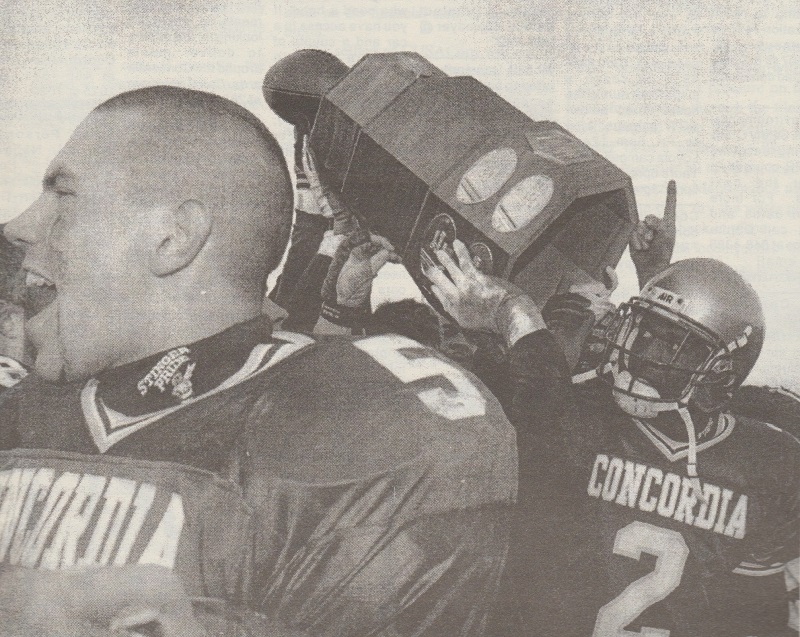Twenty years later, players recall the journey to the Vanier Cup
The 1998 Concordia Stingers football team made history, being the only team from Concordia to play in the Vanier Cup, the national championship game for Canadian university football. They ended up losing that game 24-17 against the Saskatchewan Huskies, at the Skydome (now the Rogers Centre) in Toronto.
Twenty years later, the entire team was inducted into the Concordia Sports Hall of Fame this past September. Still, they remain the last Stingers football team to win the provincial championship, the Dunsmore Cup.
Uniting a divided team
Pat Sheahan, who is the current head coach of the Queen’s Gaels, became head coach of the Stingers in 1989, winning the Dunsmore Cup with them in 1993. After that title, he had a whole new recruiting class by 1998.
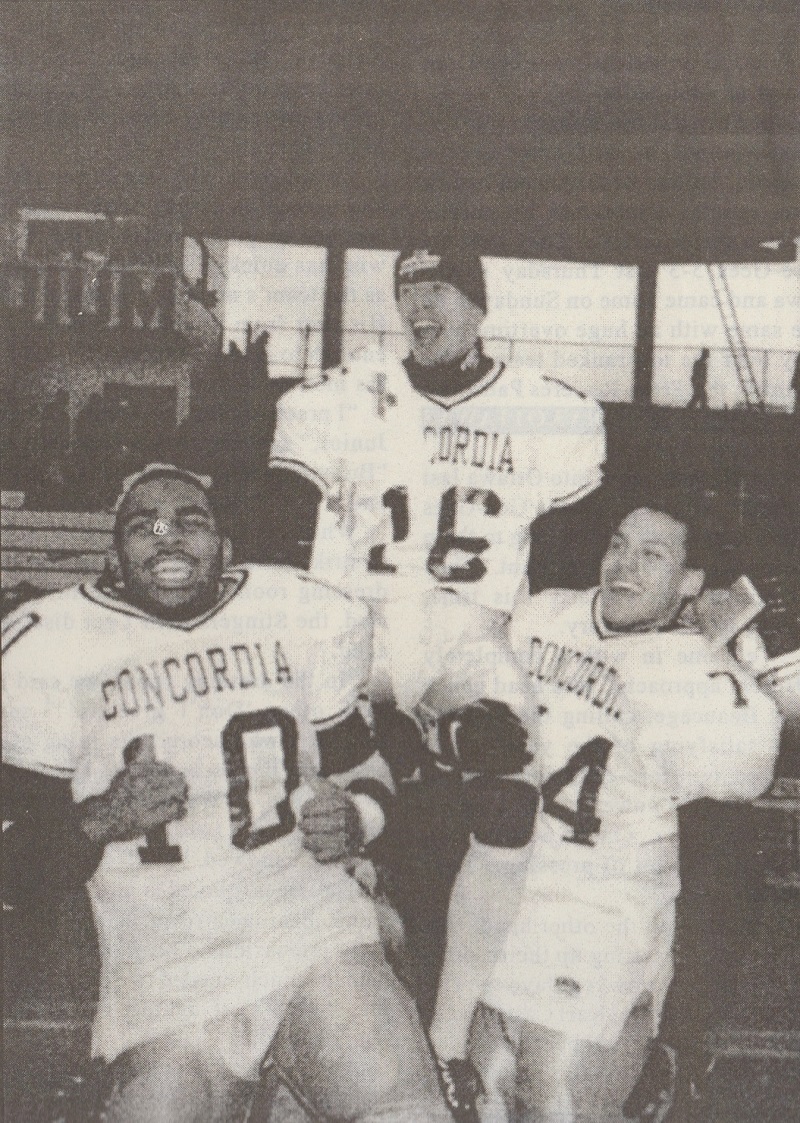
Out of 66 total players on the team, 33 were from Ontario, 32 from Quebec, and one from British Columbia. But for Montrealer cornerback Sean Gordon, who was playing his second season with the team in 1998, this many cross-national players created a divide in the locker room.
“The years before, there were a lot of factions in the locker room, basically we had two locker rooms: offence and defence,” Gordon said. “But the 1998 team broke down the locker room. There weren’t any factions, no little groups and everyone was together.”
Sheahan said most of those players came together in 1995, and suffered through a 2-6 season in 1996, but developed well as a unit. “A terrific group [of players]; they really came together, bonded together and became a team,” Sheahan said. “It was so gratifying to see.”
By 1997, the Stingers improved to a 5-3 record, losing the semi-final in the dying moments against the Ottawa Gee-Gees. But Sheahan said he really started to notice how good the team became by the end of that year. “I think what the guys learned in 1997 is that they were pretty good,” said Sheahan. “In 1998, it just all came together; they were a year older and a year wiser, and they really played well.”
Rocky start
The 1998 Concordia Stingers didn’t start the season how they would have liked. Before their first game against Queen’s, and on the way from their motel to the Richardson Memorial Stadium in Kingston, Ont., their bus broke down.
“As people were driving by, our guys were sitting on the side of the highway on their equipment bags waiting for another bus to pick us up,” Sheahan said.
The Stingers had a rushed warm-up and started the game nearly an hour late, eventually losing 32-11, but Gordon said it was a season-defining moment, bringing the players together.
Concordia beat the Carleton Ravens 19-7 in the home-opener a week later, but lost 9-4 to cross-town rivals the McGill Redmen after that.
“I gathered the team after the McGill game and I hauled them in and said: ‘Look guys, there are going to be some good things happening to us this year,’” Sheahan said. “The reason why is because we were getting great defence and great special teams. It was only a matter of time before the offence started clicking.”
Wide receiver Sylvain Girard, who was in his fourth and final year, doesn’t remember the exact turning point for the team. “At one point, we just decided that’s it. [If we] keep going the way we’re going, obviously something isn’t working,” Girard said. “At one point we just started playing together, and the offence started clicking.”
Setting records
The Stingers had a bye week after their game against Laval, although they did play the State University of New York Canton Kangaroos in a non-conference game, and lost 23-6. But on Oct. 3, 1998, in a home game against the Université de Laval Rouge et Or, the Stingers’s offence exploded for a 45-32 win. Girard caught six passes that day, five of them touchdowns, which remains tied as a U Sports record for most touchdown catches in a game. It also happened to be his 23rd birthday.
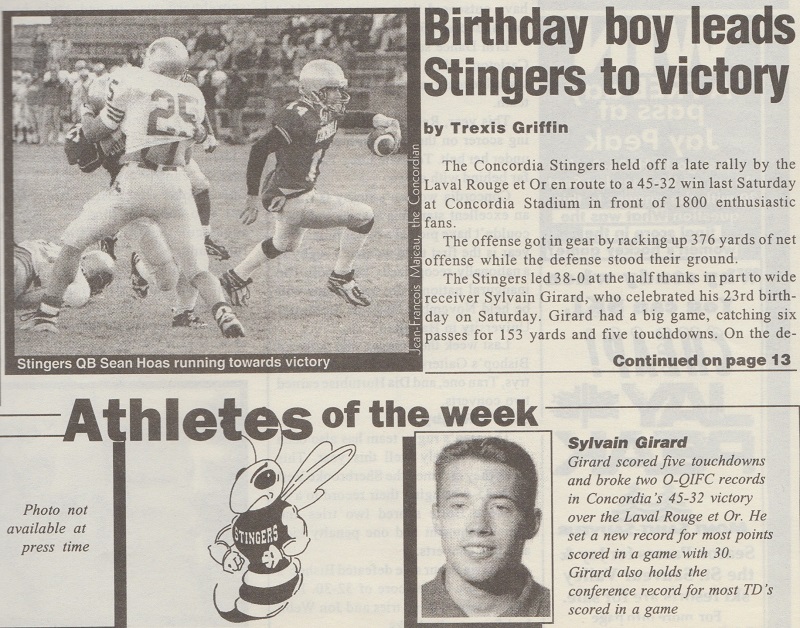
Defensive coordinator Paul Chesser said that win gave them confidence moving forward, as they won their next four games to finish the regular season. “A little success goes a long way and people start to believe,” Chesser said. “The leadership of the team really dictated the camaraderie in the locker room.”
Girard went on to set many Concordia records that season. In 1998, he set the school record for most touchdowns in a season, with nine. His 22 career TDs in maroon-and-gold is the second-most in the Réseau du sport étudiant du Québec (RSEQ) history.
The Montreal Alouettes drafted Girard fifth overall in the 1999 CFL draft, and he played with them until 2006, winning a Grey Cup in 2002.
“The defences we were playing against were so worried about our running game, they had to put extra attention to it,” said Girard, crediting his Stingers teammates for his success. The team’s running backs, Evan Davis Jr., Scott Ashworth, and Richard Gaboton, along with quarterback Sean Hoas, all had over 250 yards of rushing that season. “They had to put extra attention to [the running game] so whenever we decided to pass, it made so much more room for me and the other receivers,” he added.
Ring of Fire
After every win in 1998, Girard remembers the whole team singing along to “The Ring of Fire” by Johnny Cash in the locker room. “Every time I hear that song, it brings me back to the 1998 season,” Girard said. “With experience now, I’ve come to realize every good team has something to bond over, and for us part of it was that stupid song.”
“It was a really diverse group coming from all sorts of backgrounds,” Chesser said. “[Ring of Fire] was the one song that could take this whole diverse group and unite them.”
For Girard, this tradition added to his fun experience at Concordia. “They’re the reason why I played football for so long, because they made it fun,” Girard said. “They’re the reason why I’m still coaching today.”
“I came here in 1995. I didn’t speak a word of English, didn’t know anybody, and didn’t know what I was doing,” Girard added. “But then they made me appreciate everything here, and the coaches made a football player out of me.”
Gordon said that, because of the team’s camaraderie, they wanted to play for each other.
“We had good communication, so if somebody got out of place, you backed him up,” Gordon said. “We were all on the same page.”
The Dark Bowl
The Stingers ended up finishing first in the division and beat the Bishop’s Gaiters 27-17 in the semi-final. On Nov. 14, 1998, they hosted the Dunsmore Cup against the Laval Rouge et Or. The game kicked off at 2 p.m. at the Concordia Stadium, where lights had not yet been installed.
Ashworth scored a one-yard rushing touchdown less than three minutes into the game to give the Stingers a 7-0 lead. On the other side, Rouge et Or quarterback Dominik Goulet had left Concordia to go to Laval, so Chesser knew how to play defence against him.
“We knew he wasn’t particularly mobile but he was a precision passer, so we played the whole game with six defensive backs [as opposed to five],” Chesser said. “They weren’t going to beat us running; they had to beat us throwing the ball, so we put an extra person in coverage and it made a huge difference.”
Gordon said this meant, as a defensive back, he had to play man-to-man coverage, and couldn’t let his wide receiver get away from him. “They had confidence in our defence, so we just blitzed all game,” he said.
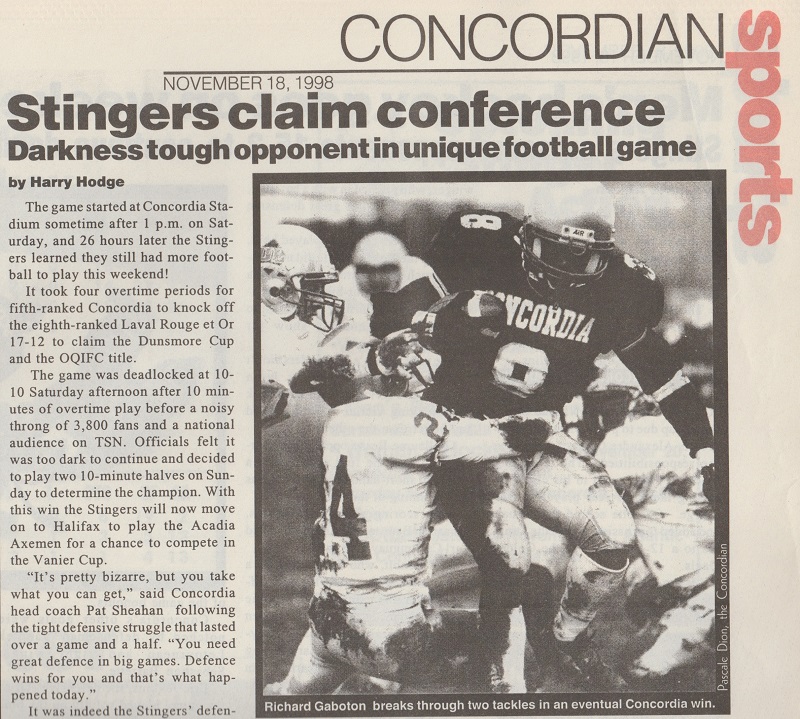
The Rouge et Or slowly climbed back into the game with three-straight field goals and a punt single, to hold a 10-7 advantage in the third quarter.
“They gave us all we could handle that day, there was no question about that,” Sheahan said.
Girard said his memory of the game isn’t the best, and didn’t realize how close the game actually was. He made a catch late in the fourth quarter to set Dave Miller-Johnston up for a field goal, which tied the game and sent it into a scoreless overtime. According to historical data, civil twilight ended just before 5 p.m., but the game continued in the darkness.
“At the end of the overtime period, it was dangerously dark,” Chesser said. “We had turned on the practice-field lights, so we got a little bit of light, but I was standing on the sideline and could not see the other side of the field.”
That’s when Sheahan met with Laval head coach Jacques Chapdelaine, late Stingers athletic director Harry Zarins, and officials to discuss what to do next. The officials didn’t want to play on the practice field, because it didn’t have football lines, and they had to decide quickly, because the winning team had to play in Halifax the following Saturday.
“We just came to the agreement that we would have to play [the next day],” Sheahan said. “We played two 10-minute halves and determined the winner that way.”
The players had to recover in time to play 20 minutes of football, and Concordia had the advantage of being at home and using their facilities. “The game finished and it was a numb feeling,” Gordon said. “When I got home, my mom said, ‘They didn’t beat you that day, they’re not going to beat you tomorrow.’”
That night, Chesser invited the defensive coaches over for pizza to discuss strategy for day two. They weren’t allowed to review game film, but watched the highlights on TV, as the game was nationally-televised. During the game, Chesser sent a defensive back blitzing on the quarterback’s weak side, but by the end of the game, the Rouge et Or adjusted and gave more protection.
“So a light bulb went on in my head and I thought if they were going to slide protection to the weak side the following day, we’ll blitz on the strong side,” Chesser said. On the game-winning play, defensive tackle Jeff Anderson sacked Goulet, forcing a fumble, which linebacker Jason Casey scooped up to score a touchdown. “Those adjustments that we made over pizza at my house were pivotal,” Chesser said.
Just short
The Stingers beat the Acadia Axemen 25-24 a week later in the Atlantic Bowl. They went to Toronto for the Vanier Cup, carrying the school’s colours with pride.
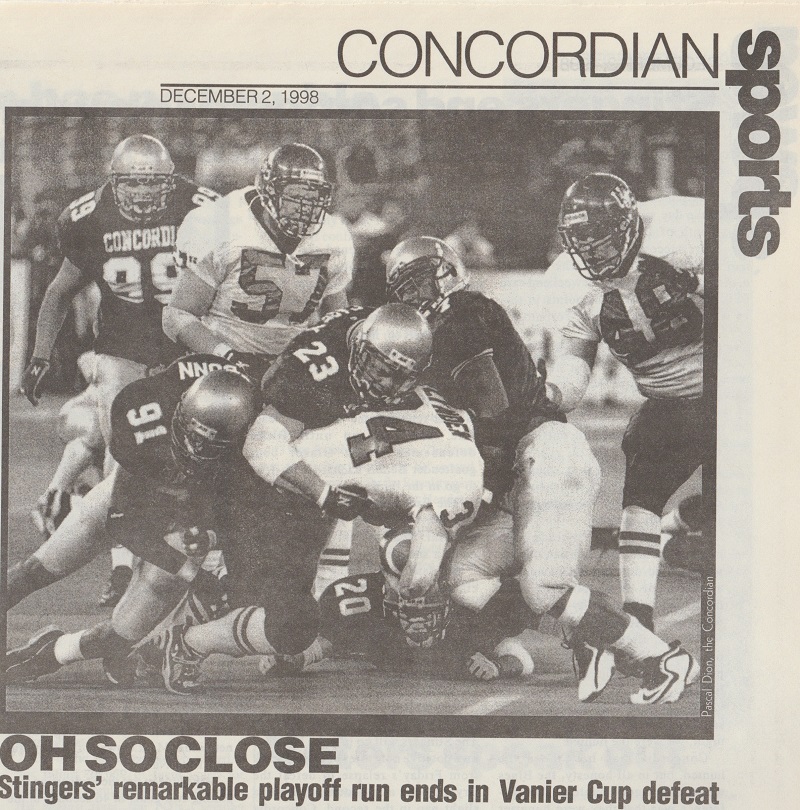
“To see the Concordia flag waved at the Skydome, to see all the Concordia fans there and how the city was behind us, it was a golden moment in my footballing scrapbook,” Sheahan said.
“I don’t have any regrets from that year, none, zero,” Girard said. “Except, of course, we should have won that last game.”
With the current edition of the Stingers football team not doing well, Gordon would like to see a team eventually do better than that 1998 team. “It’s nice be up there, and we’re the bar, but I would like to see a team jump over the bar and bring a championship to Concordia.”
Chesser jokingly said that, when the team got together for the Hall of Fame induction, they still weren’t over the Vanier Cup loss.
“Georges Vanier was the valedictorian for the class in 1906 at Loyola College, and the Vanier Cup is named after him,” Chesser said. “Sometime, we have to bring his trophy home.”
Main archive photo by Pascale Dion.
